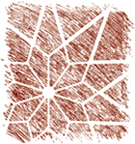March 3, 2025
To honor women’s history this month, we turn to a story of little seen women in Boston at the time Emmanuel was being founded. The Boston Globe published an article about the discovery of a marker for the Home for Aged Colored Women (1860-1944) in Dorchester’s Cedar Grove Cemetery (“From a mass grave in Boston, unearthing Black women’s lives” by Karilyn Crockett (February 3, 2025)
The Home, founded in 1860, was among the Boston institutions that offered shelter and support to women who did not have financial or other family support. In the case of the Home for Aged Colored Women, historical news accounts and the organization’s records (located at the Massachusetts Historical Society) state that women of color applied to the Home after not being welcomed at almshouses and other benevolent institutions.
We discovered that Emmanuel parishioners were benefactors of the Home from the 1860s onward (among them was Susan Coombs Dana (Mrs. Wiliam R. Lawrence).
We invite you to explore these sites which explore the Home’s history in more detail
—The National Park Service’s page about the Home.
–Mary Beth Clack, Mary Blocher, Cindy Coldren, Pat Krol, Liz Levin

